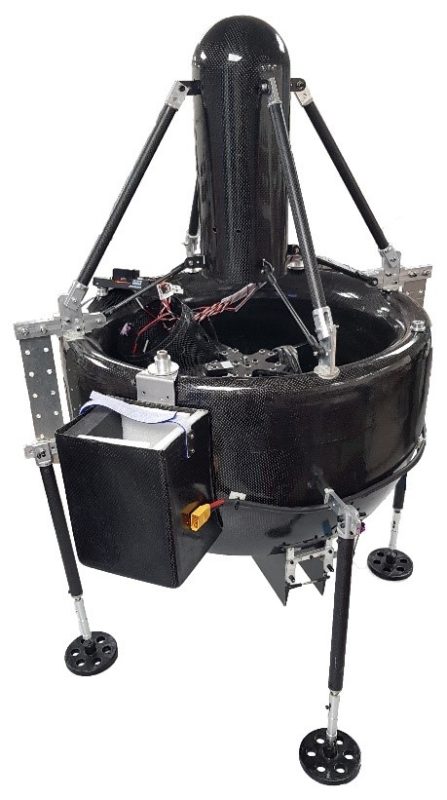VITO – Ducted fan drone
- Shir Kozlovsky (head of project), Tal Goldberg, Roni Yonash, Dor Gonda, Yuval Geyari, Eden Shazar, Niv Zuckerman
- Dr. Isaac Kadushin

As part of the final project, conducted by undergraduate students at the Technion’s Faculty of Aerospace Engineering, the design of a drone was carried out to fit the demands and specifications of The Administration for the Development of Weapons and Technological Infrastructure. The chosen configuration is a ducted fan – a single rotor within a rigid duct. A demonstration, scaled-down vehicle was designed, manufactured and controlled, and a series of experiments and test flights carried out, terminating in a secured, free flight.
The main objective for the full-scale vehicle consists of the following:
- Vertical takeoff and landing.
- Planned course: vertical ascent to an altitude of , horizontal cruise at to a distance of , vertical descent to near ground height, one hour of hovering and return via the same route.
- The mission is approximately hours long in total.
- The vehicle must withstand winds of up to .
- The vehicle must withstand atmospheric conditions.
The project was carried out by three student teams over three years, during which a 60% scale demonstration vehicle was designed, manufactured and flown. Its goal was to serve as a proof of concept for the chosen configuration to perform the given mission.
The configuration is that of a single rotor enclosed in a housing, known as a ducted fan. It was chosen for being compact, safe for operation, able to cruise at the low required speed, and compared to a more common configuration, acoustically stealthier.
The demonstration vehicle made use of a DC engine for simplification of operation, replacing the full-scale vehicle’s internal combustion (specifically, Wankel) engine.
During the project, a series of hardware experiments was conducted to build a dynamic model and simulate the system for preliminary control design, and limited flight tests in which degrees of freedom were gradually released. The experiments culminated in a secured, free flight, in which the vehicle demonstrated the following, mission-critical capabilities:
- Vertical takeoff and landing.
- Horizontal maneuvering.
- Stability when exposed to side winds.










